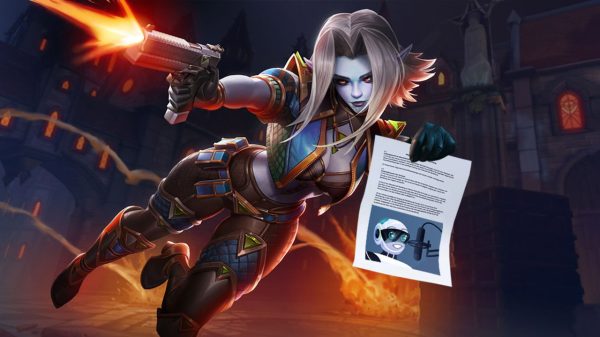If I said to you that Bayonetta Origins: Cereza and the Lost Demon is a trip into a fairy tale-inspired land of mad pixies and fairies, starring a doe-eyed girl accompanied by a Cheshire cat, you’d probably think, “Wait I’ve read that book (and seen the movie with Johnny Depp, too).”
No, this is not Wonderland and Cereza certainly isn’t Alice, though you’d be forgiven for noting the comparisons. Here Cereza isn’t pursuing a white rabbit but rather a white wolf which leads her into an enchanted forest, a place forbidden to her by Cereza’s instructor in the Umbral arts. The streak of defiance for which Bayonetta is known shows at an early age, and so Cereza follows the wolf despite her mistress’ warnings. Unprepared for the dangers that lurk there, Cereza’s pursuit seems doomed to fail until she accidentally summons Cheshire, the demon who accompanied Viola in Bayonetta 3, and they set about their journey in reluctant partnership.
In this way, Bayonetta Origins isn’t just the origin story for Cereza, later known as Bayonetta after she’s all grown up, but it’s also the origin story for Cheshire, a character who we’re likely to hear more from in future Bayonetta games given the (controversial) ending to Bayonetta 3.
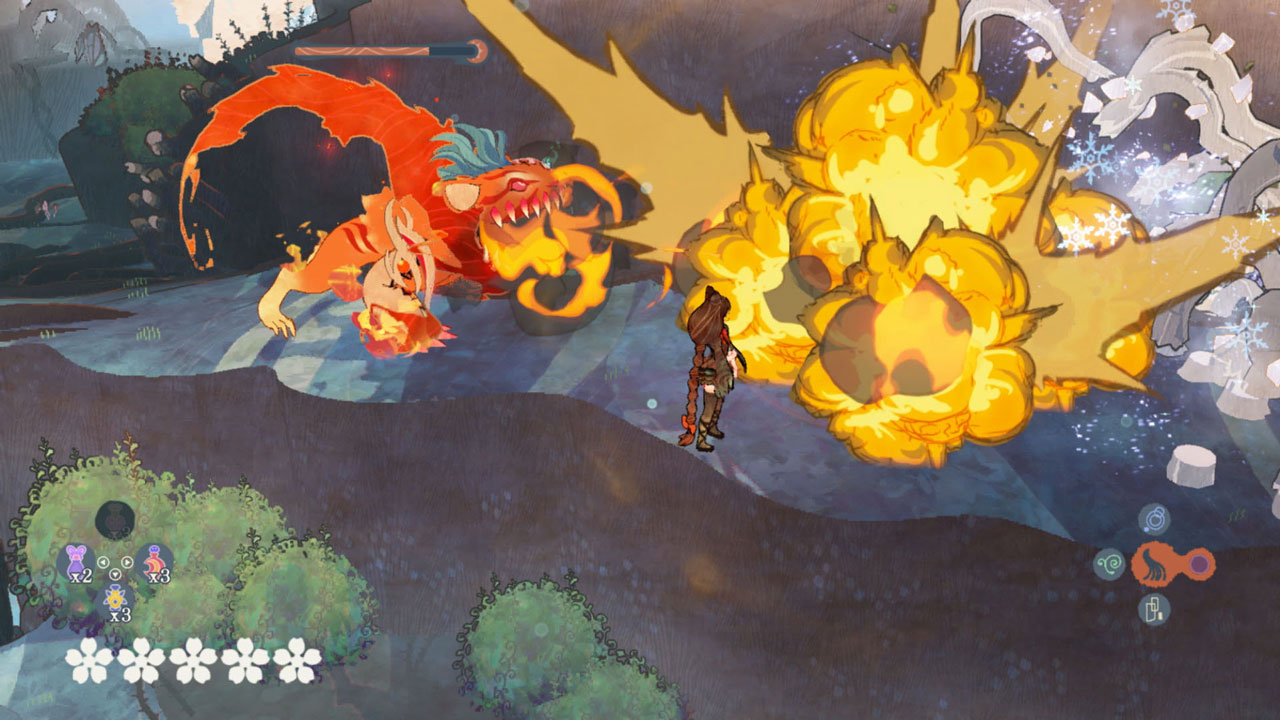
As far as origin stories go, this really is the least predictable route that PlatinumGames could have taken. The Bayonetta series has had three entries now, all of them sexually suggestive, ultra-violent, demonic-infused character action fighters that have won the loyalty of a discerning fan base for their unparalleled spectacle, iconic characters, and deep, flexible combat.
It’s surprising then that Bayonetta Origins is not possessed of any of these things. It is uninterested in spectacle, opting for slow, often plodding exploration of fairy-tale environments. The rendition of mainstay characters is very different here, all of them children and too young to have developed the sass that defines them in their gangly adult forms. As for combat, it’s less action and more puzzle, as you control both Cereza and Cheshire at the same time (one with each analogue stick) and look to combine their capabilities to both stun and wallop foes.
I very much would have liked to have been a fly on the wall as this game was shepherded from initial concept to Nintendo giving it the green light. This is a big bet for how far it veers away from the core tenets of the franchise. Other genre-breaking spin-offs find at least something to connect them to their starting point. For instance, the action and bombastic characters of Metal Gear Rising: Revengeance still feel somewhat at home despite the jump from stealth game to character action fighter, and similarly the comedy of the Borderlands universe creates a throughline between Gearbox’s looter shooters and Telltale’s narrative adventures. Here in Bayonetta Origins, no similar connective tissue can be found, and it’s likely that more than a few people will pick this up and be disappointed at just how different this is from the gameplay, setting, characters and tone of the mainline games.
It’s a damn good thing, then, that Bayonetta Origins happens to be a pretty great video game.
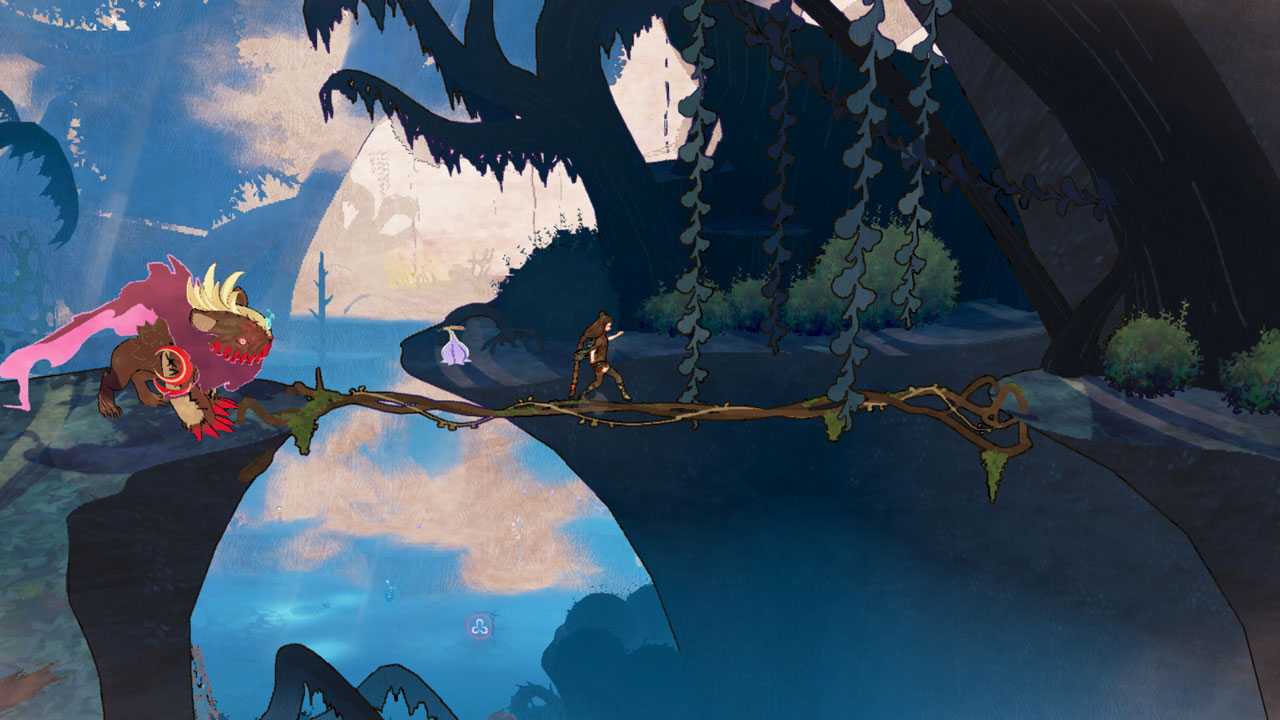
At its core, Bayonetta Origins is an exploration-focused adventure game. The enchanted forest you’re navigating is divided into regions, and you need to collect various McGuffins and Metroidvania-style power-ups to progress. The forest is broadly linear, in that there are usually only one or two paths to follow, but that doesn’t make the process of moving through it feel any less exploratory. Each new space you step into is full of secret chests, collectable resources, remembrances showing you past events, as well as important small side-quest style encounters asking you to help out some doomed denizen of the forest.
The most impressive thing you’ll discover are the dungeons peppered throughout each location. They’re called Tir Na Nogs, a name meaning ‘Land of Youth’, which is drawn from Celtic mythology. These dungeons transport you to another realm and typically involve a brief traversal and combat challenge that is more intense than that which you’d encounter in your regular forest exploration. The space traversed and the foes dispatched, you’re then able to dispel whatever malevolent force traps you, freeing you to continue your pursuit of the white wolf.
Whether it’s in the dungeons or in the forest, you’re never controlling just Cereza. She is always carrying a shrunken-down Cheshire in her arms in what’s called ‘hug mode’, but at any point in time you can press the R button to unleash Cheshire in his fully grown form. Now four or five times the size of Cereza, he is controllable with the right stick while Cereza remains controllable with the left. Similarly, Cereza’s magic is cast using the left trigger, and Cheshire’s attacks are initiated using the right trigger. You’re essentially controlling one character with each JoyCon, though sadly the game does not support any sort of couch co-op, a genuine disappointment given how well this experience would have lent itself to couch-based shenanigans.
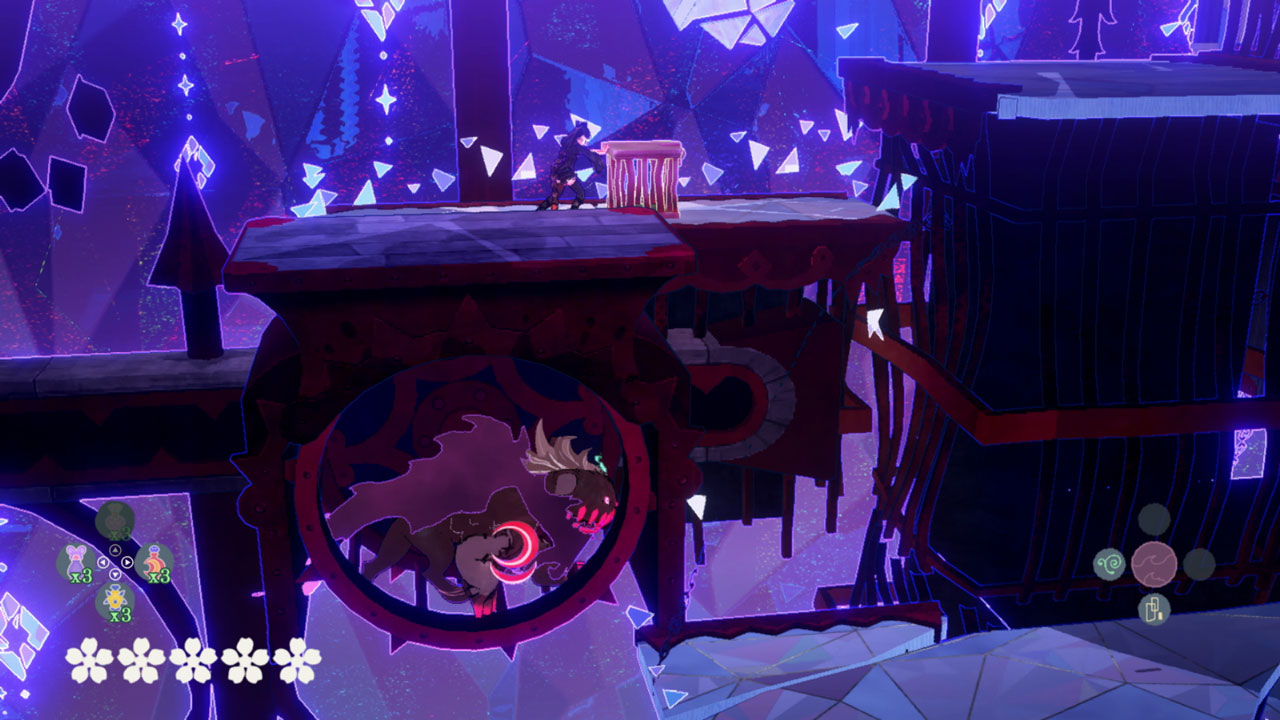
Earlier I described exploration in Bayonetta Origins as plodding, and indeed it is, but that’s hardly a bad thing. Cereza’s movement speed is slow and there is no run option until later in the game. There is no jump button. She slowly mantles up ledges and cannot handle anything higher than waist height. Cheshire has similar movement limitations. None of these things feel like drawbacks though because the game’s slow pace gives you the time to survey your surroundings and solve the puzzles that block your path. This may be in the form of a hostile plant that Cereza can hold in place using her magic, allowing her and Cheshire to pass by safely. It may be a dense thicket that Cheshire can cleave a path through. It may be a gap too wide for Cereza to hop over, necessitating Cheshire to scout ahead to find something that can be used to help her across. This is the central concept of Bayonetta Origins, the fact that its two protagonists can be controlled both together and separately. When separated, the unique capabilities of each character can be brought to bear against increasingly complex and clever environmental puzzles.
Similarly, Cereza and Chesire can operate both together and separately during combat, though this is where things get a little tricky. Independently controlling two characters as they try to solve static puzzles is one thing, but having to move, dodge and attack with two characters at the same time is another thing entirely. I’m sure there are brains out there who can handle this sort of ambidexterity effortlessly, but my brain simply could not. Rather than truly combine the capabilities of the two characters I was controlling, I found I would often rely on Cheshire’s brute force while keeping Cereza safe behind him. When a certain enemy type demanded I utilise Cereza’s magic, I found I would all but stop controlling Cheshire for a moment while I engaged that left side of my brain, doing what needs to be done before returning my singular focus to Cheshire.
This is certainly a skill issue as there is sure to be a class of player for whom the split focus gameplay style is a help rather than a hindrance, but I do imagine that many people are wired the same way as myself and I’m sure many of them will approach combat the same way I did, making things feel as though you’re not ‘playing the game correctly’ when really you’re just doing the best you can.
The difficulties I’ve described above don’t make combat any harder because the game is actually very easy (perhaps in order to accommodate players like myself). Enemies are not particularly aggressive, telegraph their attacks well in advance, have low health, dish out only a small amount of damage, and Cheshire can be very quickly revived during combat should he happen to take a few too many knocks. Bayonetta Origins is far more focused on being accessible and welcoming rather than being truly challenging or intimidating, again, something that sets it apart from the mainline entries.
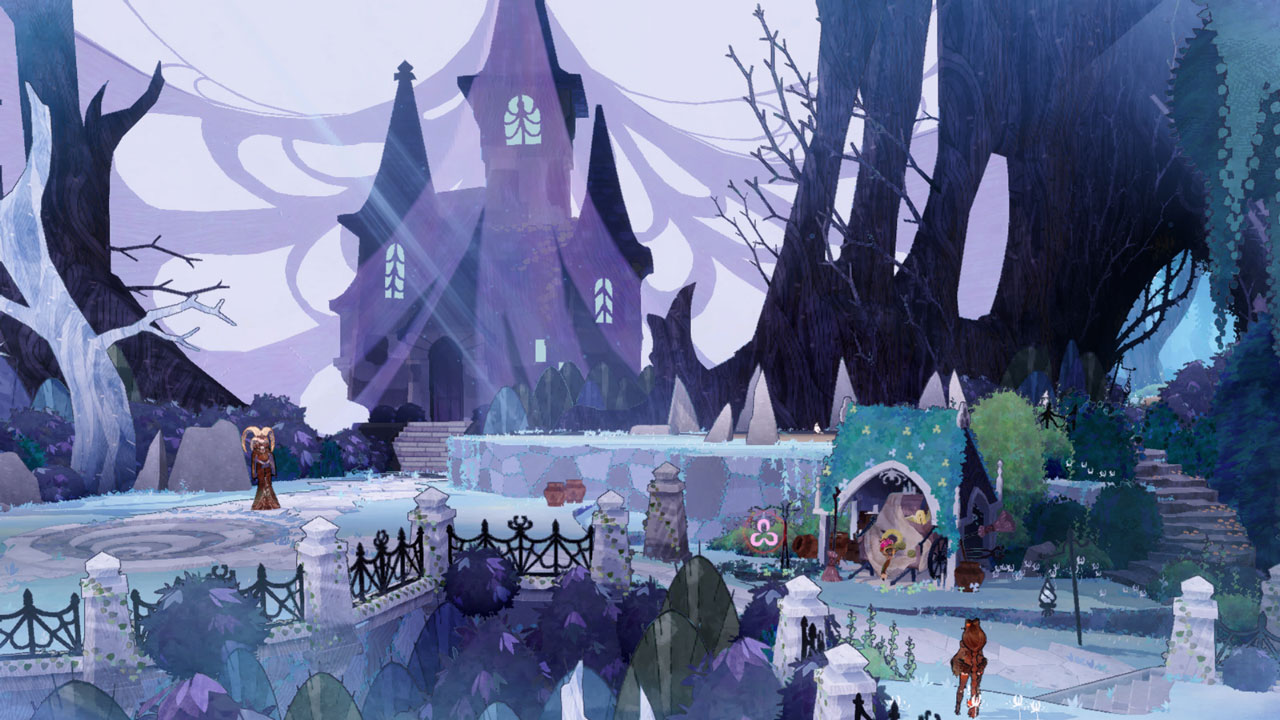
Even with these complaints about the awkwardness of the controls, combat is still enjoyable owing to its clever, puzzle-based nature. This is not a brutal beat ‘em up – it’s about using Cereza and Cheshire’s abilities to hard-counter foes, pulling their shield away from them, reflecting their projectiles, locking them in place with Cereza’s magic and setting them up for devastating execute attacks from Cheshire. Some players will be able to make all of this happen more easily than others, but everyone will get it done one way or another and they’ll likely enjoy themselves while they’re doing it.
Final Thoughts
The real joy of Bayonetta Origins: Cereza and the Lost Demon isn’t in any single component like its combat or its dual character gimmick or its sumptuous visual style. Rather, it’s the way that all of this combines in just the right measures to create something transportive. As you play through Bayonetta Origins, you begin to forget that it’s a Bayonetta game at all. That may sound like a slight, but it’s not. It’s a comment on the sort of expectations that you might bring to the game based on the franchise. After a while you stop thinking comparatively and just sink into the unique world and story that PlatinumGames has spun for you. You are Cereza’s second companion, at first uncertain as she leads you into this unfamiliar territory, but soon you are just content to follow her in her charming, unexpected adventure down the rabbit hole.
Reviewed on Nintendo Switch // Review code supplied by Nintendo
Click here for more information on WellPlayed’s review policy and ethics

- PlatinumGames
- Nintendo
- Nintendo Switch
- March 17, 2023



Ralph 'Skill Up' Panebianco is an Australian-based videogames commentator who couldn't hack it in print, so he had to turn to the lowly, scummy, under-handed world of YouTube. There he scratches out a living dolling out lukewarm takes like 'does everyone agree Fallout 76 bad?', while trying to surreptitiously convince people that Destiny 2 is good (it isn't).







